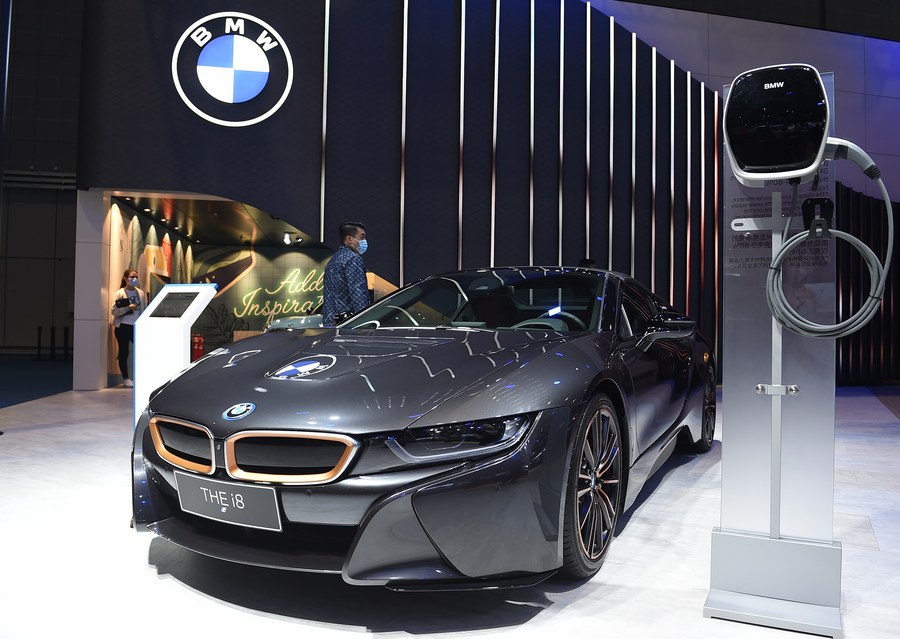
Workers assemble vehicles at the assembly workshop of FAW-Volkswagen Automobile Co., Ltd. in Changchun, northeast China's Jilin Province, Nov. 23, 2020. (Xinhua/Zhang Nan)
The three major German carmakers Volkswagen, BMW and Daimler benefited to an "above-average extent" from the market recovery in China as their Q3 sales in China increased by nine percent compared to last year, EY noted.
BERLIN, Dec. 23 (Xinhua) -- The Chinese market once again proved to be the "most important pillar" of the global automotive industry and of German manufacturers in particular, according to a report published by global consulting firm Ernst & Young (EY) on Wednesday.
China's share of global sales by German carmakers in the third quarter (Q3) climbed from 35.7 percent to 39.2 percent year-on-year, according to EY. During the first COVID-19 wave in the second quarter, 51 percent of all new cars by German carmakers were sold to customers in China.
The three major German carmakers Volkswagen, BMW and Daimler benefited to an "above-average extent" from the market recovery in China as their Q3 sales in China increased by nine percent compared to last year, EY noted.

An i8 Roadster car is exhibited at the booth of BMW at the Automobile exhibition area during the third China International Import Expo (CIIE) in Shanghai, east China, Nov. 7, 2020. (Xinhua/Zhao Dingzhe)
At the same time, sales of German carmakers in Western Europe fell by four percent and were even down 14 percent in the United States, according to the EY report.
Following a massive slump in global revenues as well as unit sales in the second quarter due to the COVID-19 crisis, businesses of the 17 analyzed automotive groups worldwide were "considerably better" in the third quarter, the EY report said.
Revenues of the analyzed automotive groups rose by 53 percent compared with the previous quarter, while new vehicle unit sales climbed by 46 percent, according to the report.
Compared to the previous year, however, global car manufacturers still had not reached the previous year's level, the report found. In terms of revenues and sales, the analyzed car manufacturers were five percent below pre-crisis levels.




 A single purchase
A single purchase









